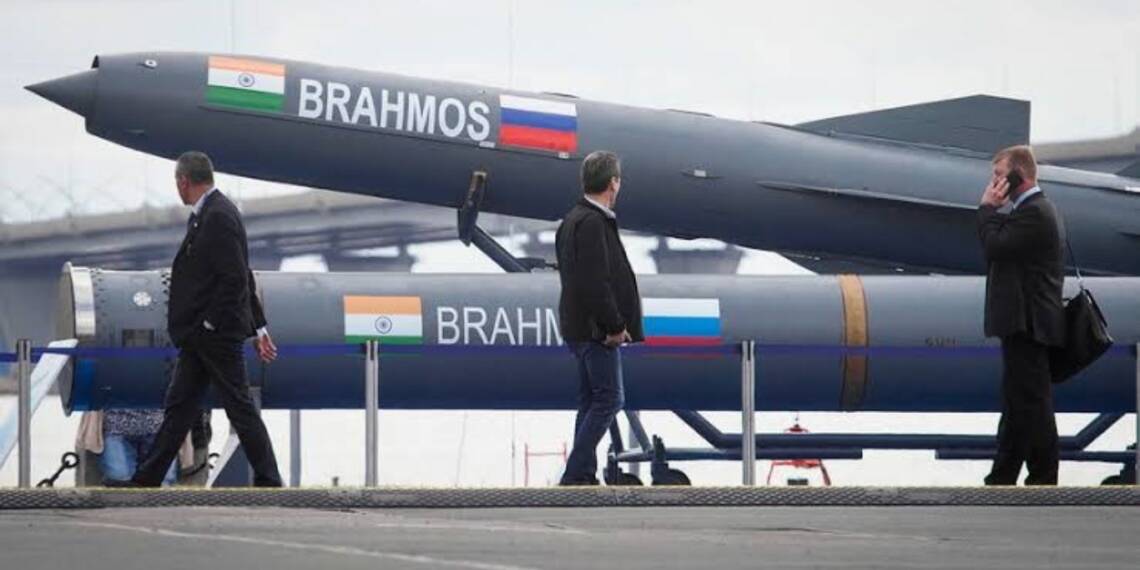India’s homegrown defensive and offensive capabilities are in the global spotlight following the reported use of the BrahMos supersonic cruise missile during the successful Operation Sindoor. This military operation, which targeted terrorist bases and Pakistani airfields, marked the first time a jointly developed Indian Russian cruise missile was used in actual combat. While India has not officially confirmed the use of BrahMos, Pakistan has publicly acknowledged it.
This has sparked major discussions on the capabilities of the BrahMos worldwide. Countries across Asia, the Middle East, and Latin America have shown their interest in buying the weapon. Experts say the precision and speed of the BrahMos, along with India’s growing role in global defence exports, are rewriting the country’s strategic influence.
What is the BrahMos Missile?
The BrahMos missile is a product of joint efforts between India’s Defence Research and Development Organisation (DRDO) and Russia’s NPOM. It is a supersonic cruise missile that can be launched from land, sea, air, or submarines. It travels at speeds of up to Mach 3, or three times the speed of sound, making it extremely hard to detect or intercept.
BrahMos operates on a fire-and-forget principle, meaning once it is launched, it does not need further guidance. It uses a two-stage propulsion system — a solid-fuel booster to take off and a liquid-fuel ramjet engine for cruising at high speeds.
The missile can fly at altitudes as high as 15 km and drop to just 10 metres above the ground when nearing its target, allowing for precise and stealthy strikes.
International Demand Grows
Following its reported success in Operation Sindoor, several countries are lining up to buy the BrahMos missile. The Philippines became the first foreign buyer under a $375 million deal. India delivered the first coastal defence battery in April 2024 and sent the second in April 2025.
India’s delivery of the missiles, which involved both military and civilian aircraft, marked a historic step in the country’s defence export journey.
Southeast Asia Eyes BrahMos
Vietnam is close to finalising a $700 million deal to acquire BrahMos missiles to enhance its naval defences. Malaysia is also reportedly planning to deploy BrahMos on its Su-30 fighter jets and Kedah-class naval ships. Both countries are concerned about China’s increasing military presence in the South China Sea and see BrahMos as a strong deterrent.
Indonesia has been in talks with India for over a decade about buying BrahMos. The deal, estimated at $450 million, could soon be finalised, according to reports.
Interest from the Middle East and Latin America
India’s missile has also attracted attention from the Middle East. Egypt, the United Arab Emirates, Saudi Arabia, Qatar, and Oman are all in various stages of negotiation to buy coastal and naval versions of BrahMos.
In Latin America, Brazil, Chile, Argentina, and Venezuela have shown keen interest. These countries see BrahMos as a powerful addition to their coastal and air defences.
A Milestone for Indian Defence
The recent inauguration of a new BrahMos production facility in Lucknow, Uttar Pradesh, by Defence Minister Rajnath Singh is expected to boost manufacturing and meet rising international demand. This facility highlights India’s push for self-reliance in defence and its ambition to become a major global arms exporter.
India’s defence experts believe the missile’s proven precision, especially visible in satellite images from Operation Sindoor, will continue to draw buyers. The ability to strike quickly and accurately makes BrahMos a preferred choice for countries looking to modernize their military.
As tensions continue to rise in regions like the South China Sea, many nations are looking to strengthen their arsenals with advanced weapons. The BrahMos missile, with its battle-tested reliability and speed, is now seen as one of the top choices worldwide.
With more countries joining the list of interested buyers, BrahMos is not just a missile — it is fast becoming a symbol of India’s growing power in the global defence market.








